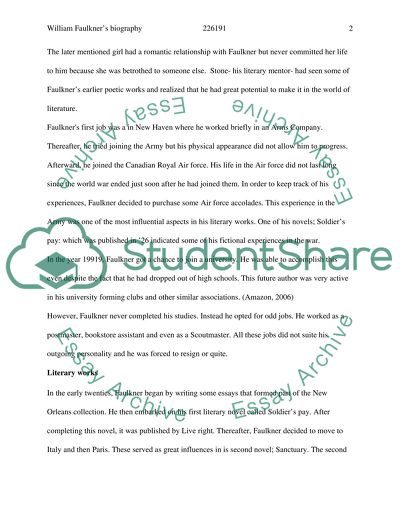Cite this document
(“William Faulkner Essay Example | Topics and Well Written Essays - 2000 words”, n.d.)
Retrieved from https://studentshare.org/miscellaneous/1504689-william-faulkner
Retrieved from https://studentshare.org/miscellaneous/1504689-william-faulkner
(William Faulkner Essay Example | Topics and Well Written Essays - 2000 Words)
https://studentshare.org/miscellaneous/1504689-william-faulkner.
https://studentshare.org/miscellaneous/1504689-william-faulkner.
“William Faulkner Essay Example | Topics and Well Written Essays - 2000 Words”, n.d. https://studentshare.org/miscellaneous/1504689-william-faulkner.


